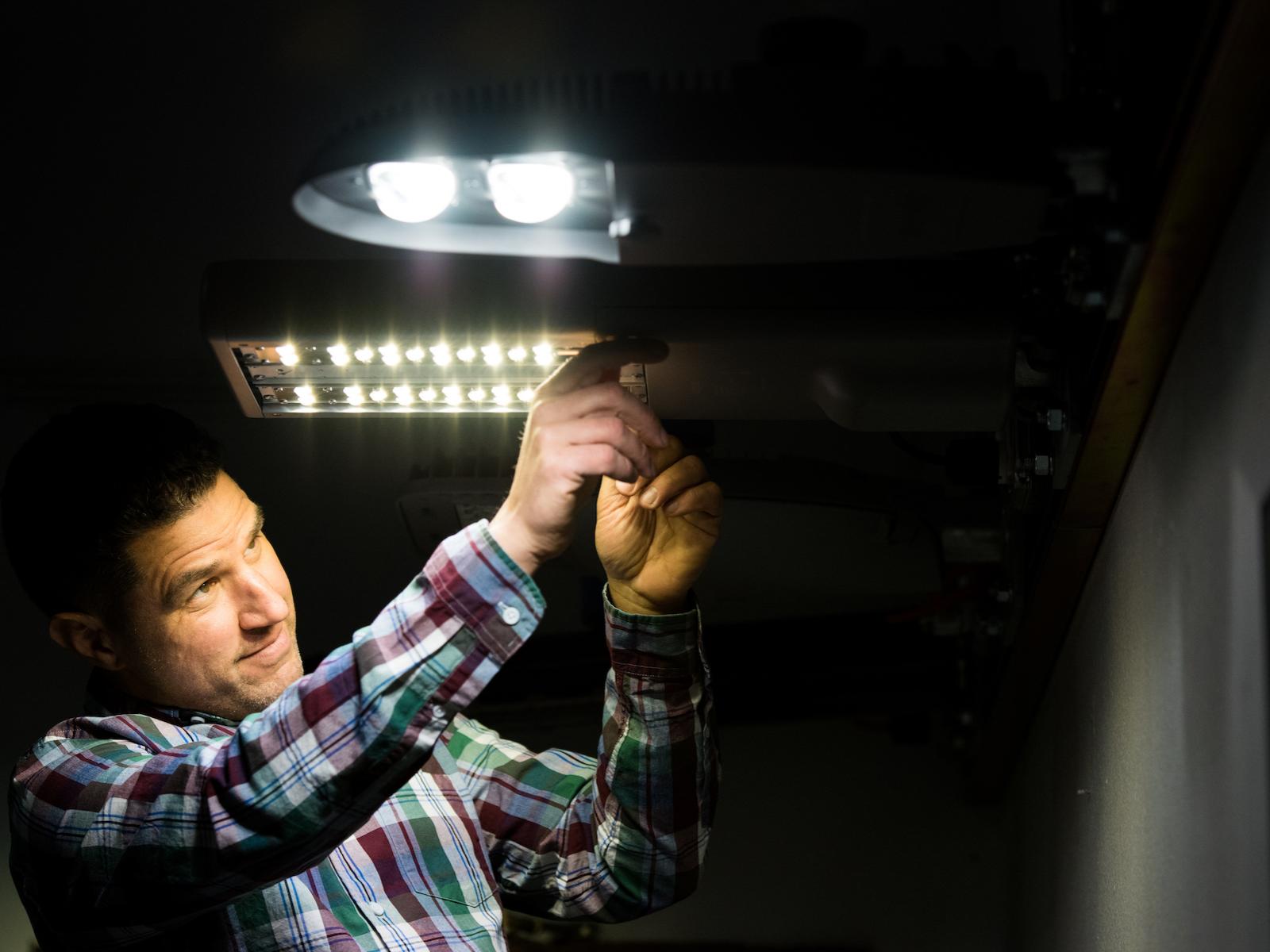PNNL Lighting Research Makes for a Brighter Future
The days are growing shorter, and some of us are beginning to decorate for the holidays.At this time of year, it's easy to have a greater appreciation for light. But, for researchers at the Department of Energy's Pacific Northwest National Laboratory, the quest for advanced, efficient lighting technologies is a year-round pursuit.

Dr. Karma Sawyer, program manager for the Emerging Technologies program within DOE's Building Technologies Office, visited PNNL's Lighting Metrology Lab in Summer 2017.
Photo courtesy of Andrea Starr, Pacific Northwest National Laboratory
Published: November 26, 2018